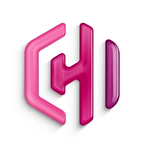Gamification in Wellness Apps: What Is It, and How to Implement It?
Visit our blog to find more articles covering AI, mobile app development, IoT, and other technologies used for achieving ambitious business goals.
Everyone agrees on the importance of health — it’s our most valuable resource for living a full and zestful life. The digital age has seen numerous health apps popping up to help people take care of themselves.
But what about people who lack the motivation to do so? After all, staying healthy is a lot of work and sometimes can feel like a chore. Gamification was a solution to make taking care of yourself a more engaging and rewarding experience.
Today, we want to talk about gamification as a tool for user engagement and how to implement it.
Why Gamification Is Essential for User Motivation in Wellness Applications?
Gamification is the concept of applying game principles and designs to non-gaming fields, such as healthcare or retail. Gamification can make users more engaged and interested in exercising or eating healthy when using wellness apps.
Instead of relying on the user’s inner motivation, which can be inconsistent, some wellness apps present gamified features that stimulate users psychologically.
For example, at the end of the training course, instead of presenting them with raw statistics, gamified apps will give users a visually appealing badge or achievement. Rewards like this serve as an additional incentive to use the app more frequently.
Another element of motivating users with gamification is competition. To create a competitive environment in wellness apps, developers can add a points system and a leaderboard to reward players for their activity.
Overall, gamified elements help users reinforce positive habits. Instead of presenting users with a long-term goal, the process is divided into small milestones that take less effort on their own. Let’s talk more about it.
How Gamification Can Drive User Motivation and Engagement in Health Apps
Now that we understand what gamification is, we need to cover what it brings to the table from a business standpoint. Here are some of the benefits you can expect from health app gamification:
- Increased user engagement: Users tend to spend more time in the app if they feel they are getting a reward out of it. This is where elements like daily streaks come in. Rewarding people for using your app every day and not breaking their streak creates an incentive to use it more;
- High user motivation: Instead of presenting users with major long-term goals that may seem daunting, gamified wellness apps divide larger health goals into smaller, more easily attainable ones. These milestones function as progress trackers and make it easier for a user to keep going, since smaller goals are easier to achieve;
- Sources of insights: Milestones and achievements provide valuable insights into users’ preferences and behaviors, which can be used for further app improvements;
- Additional marketing instrument: Learning new skills through games is easier. Instead of feeling like a dreaded chore, the app should be fun, making the app more attractive to current and potential users.
Gamified wellness apps ensure users stay engaged and enjoy using the app. And while this sounds good on paper, does it really bring results? Let’s take a look at one of the apps we’ve developed.
Keeping Users Motivated in Health Apps: How CHI Software Did It
One of the best ways to reinforce a healthy lifestyle is to exercise with friends. But during the global pandemic, staying motivated to exercise and connected with other people got a lot harder.
To combat this issue, our client developed an app that helps users monitor and track their health in connection with their friends. To improve on their existing solution, they asked us for help developing one particularly important feature — a leaderboard.
The concept of a leaderboard is a form of gamification encouraging competition. To make it even more interesting, we devised a solution: instead of one global leaderboard, why not let users compete locally?
This led us to the creation of a leaderboard that can be adjusted to one city, organization, or just a group of friends. We also implemented a point system to rank user activity, where the more users exercised, the more points they earned.
While this feature is interesting on its own, that’s not the only thing the application had in store:
- User personalization: to create a customized workout plan based on users’ age, gender, weight, and height;
- Progress summary: to make users more interested in exercising, the app allows them to get results by the day, week, or month;
- Core metric monitoring: to offer users visual insights into their progress, the app tracks and shows core metrics, such as sets, calories, hours, etc.
The project took us four months to finish. To learn more about the app’s concept and features, you can read our case study in full. But it’s surely not the only successful example of gamification. Let’s look at what else the market has to offer.
Our original article will introduce you to more real-market examples and implementation tips that will help you build your development workflow. Enjoy!
